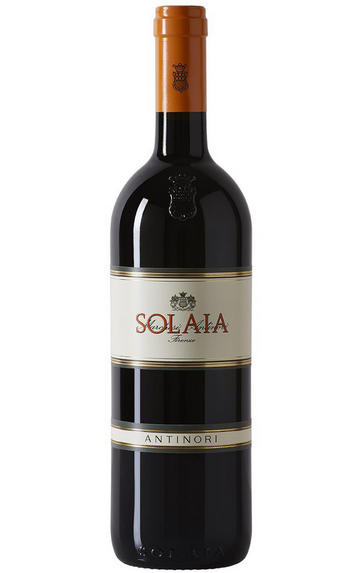
2020 Solaia, Antinori, Tuscany, Italy
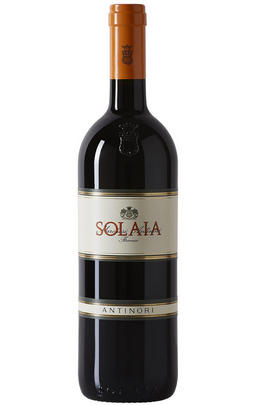
Critics reviews
The 2020 Solaia is an infant. I expected a more exuberant wine, but the 2020 is built along more classic lines. Black cherry, plum, gravel, incense, smoke, pencil shavings and spice all open effortlessly. As always, Solaia is a Cabernet Sauvignon-based wine, but it is a Cabernet that is distinctly Italian, with plenty of Tuscan acid and structure driving through the mid-palate and into the finish. The 2020 is a terrific example of the recent stylistic shift at Antinori. In the past, richness and opulence were qualities of a vintage that would have been amplified in the vineyard and cellar. Today, the aim is to capture a more balanced expression of these kinds of vintages, and that very much comes through.
I tasted a wide range of wines from Antinori, including upcoming releases from recently acquired vineyards that will inform a new range of Gran Seleziones. As much as the higher-end wines are consistently outstanding, I have to say I find the showing of the entry-level wines more impressive, given their quality and production levels. There’s a lot of ambition these days at Antinori.
Drink 2028 - 2045
Antonio Galloni, Vinous.com (August 2023)
Inky dark in appearance, the 2020 Solaia is mostly Cabernet Sauvignon with smaller percentages of Cabernet Franc and Sangiovese. This vintage unfolds to exuberant richness and thick layers of blackberry and plum. The tannins are sweet and expertly crafted, adding depth and fruit weight. The 2020 vintage is quite bold and plays its best cards in terms of texture and mouthfeel. It’s a bigger, more accessible wine compared to the last two vintages on the market. Spice, toasted coffee bean and more dark fruit colour this full-bodied Tuscan red.
One of the biggest news stories to hit fine wine this year is the full acquisition of Stag’s Leap Wine Cellars in Napa by Tuscany’s Marchesi Antinori in May 2023. The Antinori family enjoyed a 16-year partnership with the celebrated winery Warren Winiarski, founded in 1970. It is now the complete owner. The Antinori family and long-time USA partner Ste made the announcement. Michelle Wine Estates has a portfolio of wines in the American Northwest (Washington and Oregon). Marchesi Antinori is the only Italian company to own a winery in Napa.
Marchese Piero Antinori first travelled to California’s wine country in the 1960s and fell in love. In 1985, his family started making wine in Napa (with the company known as Antica, which is short for “Antinori in California”). “It is an honour for me and my family to make good on a promise made to my friend Warren Winiarski 16 years ago,” says Marchese Piero Antinori. “We wanted to safeguard the values and the heritage of the prestigious Stag’s Leap Wine Cellars.” The Stag’s Leap 1973 Cabernet Sauvignon was singled out in the celebrated Judgement of Paris in 1976 that pitted the best of Californian wine against Bordeaux. It sparked a revolution in the world of fine wine.
Drink 2024 - 2045
Monica Larner, Wine Advocate (May 2023)
70% Cabernet Sauvignon, 15% Sangiovese, 15% Cabernet Franc. Harvest 28 September to 10 October. Sorted, destemmed grapes were gently crushed. Fermentation in 60-hl truncated cone-shaped tanks. Immediately after racking, malolactic fermentation began in barriques. Ageing took place in new French oak barrels for approximately 18 months. The various lots were aged separately, then blended and reintroduced into barrels to complete the ageing process.
Dark in colour and dark in profile. Chocolate, damsons and kirsch. The palate is plush, laden with oak spice and fleshy black fruit. The glycerol and sweetness of fruit completely cloak the tannins, giving a very hedonistic texture. Concentrated and full throttle with a very long finish.
Drink 2025 - 2035
Tom Parker MW, JancisRobinson.com (September 2023)
Subtle and beautiful on the nose with currants, flowers and light sage aromas that follow through to a full body with ultra-fine tannins and a long and flavorful finish. Extremely polished and poised. Classy.
Best after 2028
James Suckling, JamesSuckling.com (November 2023)
Baked black fruit, ripe, fragrant and intense on the nose. Bright and sour fruit on the palate, quite a sharp initial tang from the high acidity before rich, sunny, ripe strawberries and raspberries come into play with liquorice, toast and cedar aspects, giving the spiced element to the expression and graphite offering minerality.
This is a powerful wine, no doubt, bordering on too hedonistic at times - a result of the hot and dry summer, it's sensual, rich and flashy, but the sense of control and layers of juicy freshness help balance the opulence with refinement. Clearly confident and charismatic, fans of this style will delight with Solaia in 2020. Made by Renzo Cotarella, Stefano Caraneto and Pietro Dogliani.
Drink 2027 - 2045
Georgina Hindle, Decanter.com (August 2023)
About this WINE
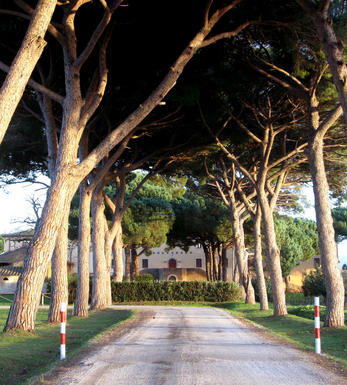
Antinori
Antinori is the most famous name in Italian wine and the influence of Piero Antinori in the last 25 years has been nothing short of revolutionary. Antinori's flagship wine, Tignanello, first appeared in 1971 and caused a sensation by its use of Cabernet Sauvignon in a Sangiovese blend and with its practice of ageing in small French barriques. Antinori was accused of vinous treachery and treason but soon barrique-aged blends of Sangiovese and Cabernet began appearing all across Tuscany.
Solaia is a Cabernet-dominated blend, which, like Tignanello, is from the Santa Cristina estate and is stunningly rich. Tenuta Belvedere is in Bolgheri on the Mediterranean coast .
The Guado al Tasso estate is also part of the small, prestigious Bolgheri DOC zone which has been famous for its Rosé wines since the Seventies: along with the white wines made here, they were awarded the DOC in 1984, which was extended to the reds in 1994. The area is now best-known and admired for its outstanding red wines, the so-called Super-Tuscans. The estate covers over 1,000 hectares, 300 of which are planted with vineyards, and the rest with wheat, sunflowers and olives
Tenuta Guado al Tasso was part of feudal lands of about 4,048 hectares along about 7km of coast and belonged to the Della Gherardesca family, whose roots in this region date back to over 1,200 years ago. In the Thirties the land was inherited by Carlotta della Gherardesca Antinori - mother of Piero Antinori - and her sister, who was married to Mario Incisa della Rocchetta (who took possession of the nearby Tenuta San Guido). There were seven castles on the estate, four of which are still standing, and 86 watchtowers, built 1000 years ago to protect the family from Saracen invaders from the African coast.
There are currently 300 hectares of vineyards at Tenuta Guado al Tasso, situated at an altitude of 45-60m a.s.l. on various types of soil. The varieties planted are Vermentino (a grape variety native to the coastal area of Liguria and northern Tuscany, which has also flourished for many years in Corsica and Sardinia), Sangiovese, Cabernet Sauvignon, Merlot and Syrah. There are also small quantities of other varieties including Cabernet Franc.
Many ideas and resources have been invested in the Guado al Tasso estate, for constant research into improved quality: as a result, a nursery for rooted cuttings was created here in 1994, mainly for the propagation of Vermentino, but also to produce the best possible selections of Sangiovese, Cabernet Sauvignon and Merlot for use in other Antinori estates.
The mitigating influence of the Mediterranean prevents drastic temperature variations and the vines flower and ripen early, thanks to the stable, fairly warm microclimate with its extraordinary light during the final phases of ripening. Thanks to the microclimate of the "Bolgheri amphitheatre", harvesting takes place early here, about two weeks before the Chianti harvest.
The Guado al Tasso estate makes Scalabrone (Bolgheri Rosato DOC) from Sangiovese, Merlot and Syrah, Vermentino di Bolgheri DOC, a monovarietal Vermentino (made for the first time in 1996) and since 1990, the Guado al Tasso Bolgheri DOC Superiore from Cabernet Sauvignon and Merlot grapes.
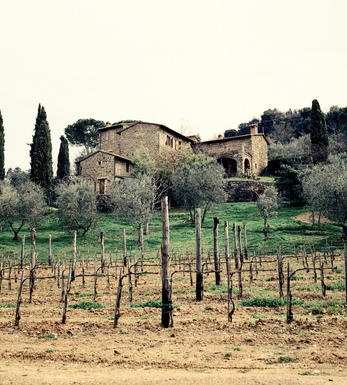
IGT Tuscany
IGT (Indicazione Geografica Tipica) Tuscany is a wine classification from Italy's Tuscany region. It is one of the official wine classifications recognized by the Italian government. IGT is a step below the highest classification, DOCG (Denominazione di Origine Controllata e Garantita), and above the DOC (Denominazione di Origine Controllata) level.
The IGT classification was introduced in 1992 to allow winemakers more flexibility in grape varieties and employ winemaking techniques while still ensuring a certain level of quality and geographical indication. This classification gives winemakers more freedom to experiment and innovate, deviating from the strict regulations of the DOC and DOCG classifications.
IGT Tuscany wines can be produced throughout the entire region of Tuscany, encompassing various sub-regions and terroirs within the area. This classification allows winemakers to use traditional Tuscan grape varieties, such as Sangiovese, and non-traditional grape varieties, including international ones like Cabernet Sauvignon, Merlot, Syrah, and others.
The IGT Tuscany classification gives winemakers the flexibility to create wines that showcase the unique characteristics of their specific vineyards and winemaking styles. It allows for experimentation with blending different grape varieties, using innovative winemaking techniques, and exploring new regional vineyard sites.
IGT Tuscany wines can vary greatly, from traditional and terroir-driven expressions to more modern and international styles. This classification has played a significant role in developing Super Tuscan wines, often IGT designated and known for their high quality and international recognition.
Overall, IGT Tuscany provides a platform for winemakers in the region to express their creativity and produce wines that reflect their unique vision while maintaining a connection to the rich heritage and traditions of winemaking in Tuscany.
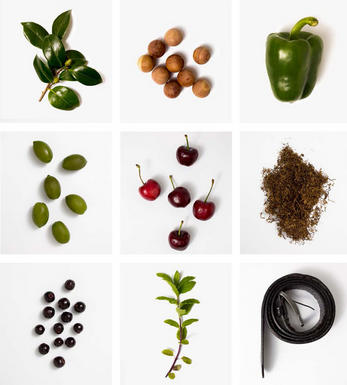
Cabernet Sauvignon
The most famous red wine grape in the world and one of the most widely planted.
It is adaptable to a wide range of soils, although it performs particularly well on well-drained, low-fertile soils. It has small, dusty, black-blue berries with thick skins that produce deeply coloured, full-bodied wines with notable tannins. Its spiritual home is the Médoc and Graves regions of Bordeaux where it thrives on the well-drained gravel-rich soils producing tannic wines with piercing blackcurrant fruits that develop complex cedarwood and cigar box nuances when fully mature.
The grape is widely planted in California where Cabernet Sauvignon based wines are distinguished by their rich mixture of cassis, mint, eucalyptus and vanilla oak. It is planted across Australia and with particular success in Coonawarra where it is suited to the famed Terra Rossa soil. In Italy barrique aged Cabernet Sauvignon is a key component in Super Tuscans such as Tignanello and Sassicaia, either on its own or as part of a blend with Sangiovese.


Buying options
Add to wishlist
Description
The 2020 Solaia is an infant. I expected a more exuberant wine, but the 2020 is built along more classic lines. Black cherry, plum, gravel, incense, smoke, pencil shavings and spice all open effortlessly. As always, Solaia is a Cabernet Sauvignon-based wine, but it is a Cabernet that is distinctly Italian, with plenty of Tuscan acid and structure driving through the mid-palate and into the finish. The 2020 is a terrific example of the recent stylistic shift at Antinori. In the past, richness and opulence were qualities of a vintage that would have been amplified in the vineyard and cellar. Today, the aim is to capture a more balanced expression of these kinds of vintages, and that very much comes through.
I tasted a wide range of wines from Antinori, including upcoming releases from recently acquired vineyards that will inform a new range of Gran Seleziones. As much as the higher-end wines are consistently outstanding, I have to say I find the showing of the entry-level wines more impressive, given their quality and production levels. There’s a lot of ambition these days at Antinori.
Drink 2028 - 2045
Antonio Galloni, Vinous.com (August 2023)
wine at a glance
Delivery and quality guarantee